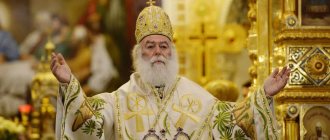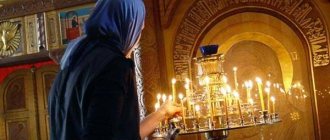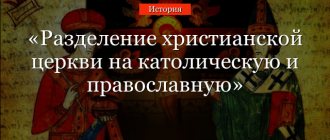Childhood and youth
The future Roman emperor was born in Naisa, a city in Upper Moesia (today it belongs to Serbia and is called Nis). His full name was Flavius Valerius Aurelius Constantine; he was the son of Caesar (junior emperor) Constantius Chlorus, but not from his official wife Theodora, but from his concubine (concubine) Helen.
Portrait of Constantine the Great
The exact year of birth has not been established; according to a number of sources, it can be assumed that it was the 272nd. Later, Constantius had to separate from Helen and, for political reasons, marry Maximilian’s stepdaughter. As a result of his next marriage, Konstantin had three brothers and three sisters.
References
- Theoharis Dethorakis, History of Crete
, Heraklion, 1994, p. 364. - Mehmet Ugur Ekinci (2006). Bilkent University, Ankara, Ed. "The Origins of the Ottoman-Greek War of 1897: A Diplomatic History". Master's dissertation.
- Édouard Driot and Michel Léritier, Diplomatic history of Greece from 1821 to the present day
, Tomo IV, Paris, PUF, 1926, p. 382. - ↑ a b c d
John Van der Kiste,
Kings of the Hellenes: The Greek Kings, 1863-1974
, Sutton Publishing, 1994, ISBN 0-7509-2147-1 - John van der Kiste, Op.
cit. , page 57. - John van der Kiste, Op.
cit. , page 58. - ↑ a b
John van der Kiste,
op.
cit. , page 59. - Edouard Driot and Michel Léritier, op.
cit. , Volume IV, pp. 475-476. - Terrades, Mark. Hellenistic drama.
Ion Dragoumis (1878-1920) and the national question in Greece at the beginning of the twentieth century. , L'Harmattan, 2005, p. 235-236. - ↑ a b c d
John van der Kiste,
op.
cit. , pp. 68-69. - Bertin, Celia. Marie Bonaparte
, Plon, Paris, 1982, p. 178. - John van der Kiste, Op.
cit. , pp. 69-70. - Terrades, Mark. Hellenistic drama.
Ion Dragoumis (1878-1920) and the national question in Greece at the beginning of the 20th century , L'Harmattan, 2005, p. 237. - Apostolos Vakalopoulos, History of Modern Greece
, Horvath, 1975, pág. 206. - Clogg, Richard. A Short History of Modern Greece
, University Press, Cambridge, 1979, p. 100. - John van der Kiste, Op.
cit. , page 70. - Driot, Edouard and Michel Leritier, op.
cit. , Tomo V, pp. 108-113. - ↑ a b c d e
Hall, Richard K.
Balkan Wars 1912-1913.
Prelude to the First World War , Routledge, Londres y Nueva York, 2000, pages. 112-124. - John van der Kiste, Op.
cit. , page 79. - Clogg, Richard, op.
cit. , page 83. - Koliopoulos, Yiannis and Thanos Veremis, Greece: A Modern Continuation: 1831 to the Present
, Londres, Hurst & Company, 2002, pp. 201-205, ISBN 1-85065-463-8 - John van der Kiste, Op.
cit. , pp. 82-87. - Edouard Driot and Michel Léritier, Diplomatic history of Greece from 1821 to the present day
, Tomo V, Paris, PUF, 1926. - Apostolos Vakalopoulos, A History of Modern Greece
, Horvath, 1975, ISBN 2-7171-0057-1 - Clogg, Richard. A Short History of Greece
, Cambridge UP, Cambridge, 1992, ISBN 0-521-37830-3 - Terrades, Mark. The Drama of Hellenism, Ion Dragoumis (1878–1920) and the National Question in Early 20th Century Greece
, L'Harmattan, 2005, ISBN 2-7475-7788-0
Wars
Young Constantine enlisted in the army in Nicomedia and took part in campaigns in Egypt and Persia. In 305, his father, who had become emperor in the western part of the country, summoned his son to help him in the British battle against the Picts. When Constantius died a year later, the troops immediately recognized Constantine as the legal heir, but officially he received only the status of Caesar.
Constantius appoints Constantine as his successor
At that moment, 6 people claimed the title of the main leader of the empire, which caused political strife. In 307, Constantine secured the throne by marrying Fausta, the daughter of his main rival Maximilian. He later attempted to illegally seize power, after which he was forced to commit suicide. Constantine also removed the remaining rivals by arranging profitable marriages and other political intrigues.
external reference
- Wikimedia Commons has a media category for Constantine I of Greece
.
| authoritative control |
|
- Data: Q152099
- Multimedia: Constantine I of Greece
Politics and religion
In 312, Constantine advanced to battle in a Roman suburb near the Milvian Bridge, where, according to legend, he saw a sign of his destiny - a fiery cross in the sky. According to another version, the emperor had a prophetic dream in which he was ordered to place a monogram of the first letters of the name of Christ on the shields of his soldiers. One way or another, the battle was won, and after the victory, the designated symbols appeared on the imperial banner - the labarum.
After this, Constantine, in the Edict of Milan, granted freedom of religion to the citizens of the empire. Christianity acquired the status of a “permissible religion”; by the order of the emperor, persecution of followers of Christ and attempts to take away property from the church were prohibited.
Later, Constantine had a conflict with his relative Licinius, who helped him in public administration. He, who for the time being obediently played the role of governor in the eastern part of the country, rebelled and declared war, simultaneously resuming the persecution of Christians on his territory. Constantine defeated Licinius in 2 battles and removed him from power, becoming the sole ruler of the Roman Empire.
Icon of Saints Constantine and Helena
It was his reign that gave rise to the spread of Christianity in Europe. Constantine's mother Elena endeared him to him, and his father also patronized Christians, considering them respectable and honest citizens. The emperor liked even more the firmness and loyalty of the representatives of this religion to their teachings, especially considering the horrors with which their persecution sometimes turned out.
The ruler’s coming to Christianity took place gradually - for example, he celebrated his first victory over his rivals in the temple of Apollo, making abundant sacrifices to God. Sympathy for another faith began to appear in Constantine after military victories. The aristocratic elite did not approve of the ruler's views. In Rome, the power of pagan beliefs was especially strong, which ultimately influenced the emperor's decision to deprive the city of capital status.
Bust of Constantine the Great
Constantine received baptism only at the end of his life, but he strongly encouraged representatives of the Christian church and consistently pursued a policy of protecting them. He actively intervened in issues of church government: in 325, at the First Ecumenical Council, he took part in resolving disagreements over the teachings of the Arians and subsequently attended its meetings several times. After another 5 years, the ruler moved the capital to Constantinople, which later became the spiritual and political center of the Byzantine Empire.
Edict of Milan: recognition of Christianity
In February 313, two Augustans of the Roman Empire, Constantine and Licinius, met in Milan. Earlier, during the war, Constantine had betrothed his half-sister to Licinius. Now the marriage had to be concluded.
Licinius. (wikimedia.com)
In Milan, two emperors announced freedom of religion for Christians throughout the empire and the return of their stolen property. No document called the “Edict of Milan” was issued. Christians under the rule of Constantine no longer suffered persecution by 313. Licinius was to allow freedom of religion and return confiscated property to Christians in his part of the empire.
Personal life
Only fragmentary information has been preserved about the ruler’s personal life. It is mentioned that the matron Minervina gave birth to his eldest son and heir to the throne, Clispus, but whether she had the status of an official wife or a concubine is not known for sure. She was not the first woman in his life, but there was no mention of her predecessors in the documents.
Flavia Maxima Fausta, wife of Constantine the Great
In 307, Constantine married Flavia Maxima Faustus, daughter of Maximilian. It was a dynastic marriage with the aim of strengthening political influence, but the emperor greatly respected his educated and energetic wife, who bore him six children (three sons and three daughters). Fausta was involved in the overthrow of her father and became the culprit of the tragedy that overshadowed the last years of the life of the famous Roman ruler.
In 326, Constantine ordered the execution of his own son Flavius Julius Crispus along with his nephew Licinian. The reasons for this decision are various; the most popular version is that Crispus was executed due to the slander of Fausta, who accused him of attempted rape. The accusation was false - she used this method to get rid of the main heir in order to clear the way for her sons to the throne.
Flavius Julius Crispus
The treacherous Fausta paid in full for her crime - a month later Constantine revealed the deception and ordered her to be locked in a bathhouse, where she suffocated (according to another version, her angry husband pushed her into hot water). The execution of his wife was followed by reprisals against the emperor's friends, whom he considered involved in the case. He later put Fausta's name under the curse of memory (forbidding any posthumous mention of her), and his heirs left this order in force.
According to legend, it was moral torment after the death of his loved ones that led Constantine to the Christian faith. However, a number of modern historians reject this version: there are facts indicating that by the time of the death of his wife and son, he had already been professing this faith for 10 years and his baptism was a long-thought-out decision.
Death
In 336, the emperor felt unwell and, fearing a sudden death, began to put his affairs in order. He successfully completed the war against the Gothic and Sarmatian tribes and ordered that after his death the empire be divided between his three sons: Constantius received Asia and Egypt, Constans - Africa, Italy and Pannonia, and Constantine II - Britain, Spain and Gaul.
Monument to Constantine the Great
Early next year, the ruler went for treatment. He started with the baths in Nicomedia, later went to the hot springs of Drepan and visited the baths of Elenopolis, but he did not feel better. Konstantin spent the last months of his life in a villa in Ankiron. Feeling the approach of death, he ordered himself to be transported to Nicomedia and there, on his deathbed, he was baptized.
The emperor's dream was to be baptized in the waters of the Jordan, but he could no longer get there. It is unknown what exactly illness caused his death, but there are references to the fact that in his old age he leaned towards the Arian movement of Christianity, and the baptismal ceremony was performed by Father Sylvester.
Cornel Wilde as the Emperor in Constantine the Great
Many scientific, religious and artistic works have been written about the life of the emperor and his contribution to the spread of faith, and several films have been made. The most famous is the Italian-Yugoslav film directed by Lionello De Felice “Constantine the Great”, released in 1961.
ancestors
| Ancestors of Constantine I of Greece | ||||||||||||||||||||||||||||||||||||||||||||||||||||||||||||||||||||||||||||||||||||||||||||||||||||||||||||||||||||||||||||||||||||||||||||||||||||||||||||||||||||||||||||||||||||||||||||||||||||||||||||||||||||||||||||||||||||||||||||||||||||||||||||||||||||||||||||||||||||||||||||||||||||||||||||||||||||||||||||||||||||||||||||||||||||||||||||||||||||||||||||||||||||||||||||||||||||||||||||||||||||||||||||||||||||||||||||||||||
| ||||||||||||||||||||||||||||||||||||||||||||||||||||||||||||||||||||||||||||||||||||||||||||||||||||||||||||||||||||||||||||||||||||||||||||||||||||||||||||||||||||||||||||||||||||||||||||||||||||||||||||||||||||||||||||||||||||||||||||||||||||||||||||||||||||||||||||||||||||||||||||||||||||||||||||||||||||||||||||||||||||||||||||||||||||||||||||||||||||||||||||||||||||||||||||||||||||||||||||||||||||||||||||||||||||||||||||||||||
| Predecessor: George I | King of the Hellenes 1913-1917 | Successor: Alexander |
| Predecessor: Alexander | King of the Hellenes 1920-1922 | Successor: George II |











